Mastering Restaurant Recipe Costing Software
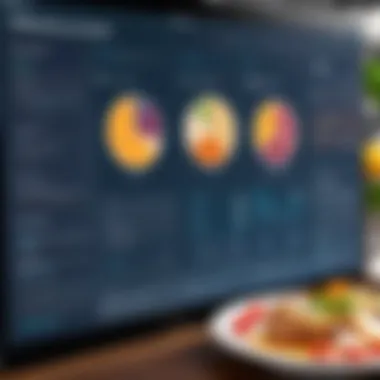
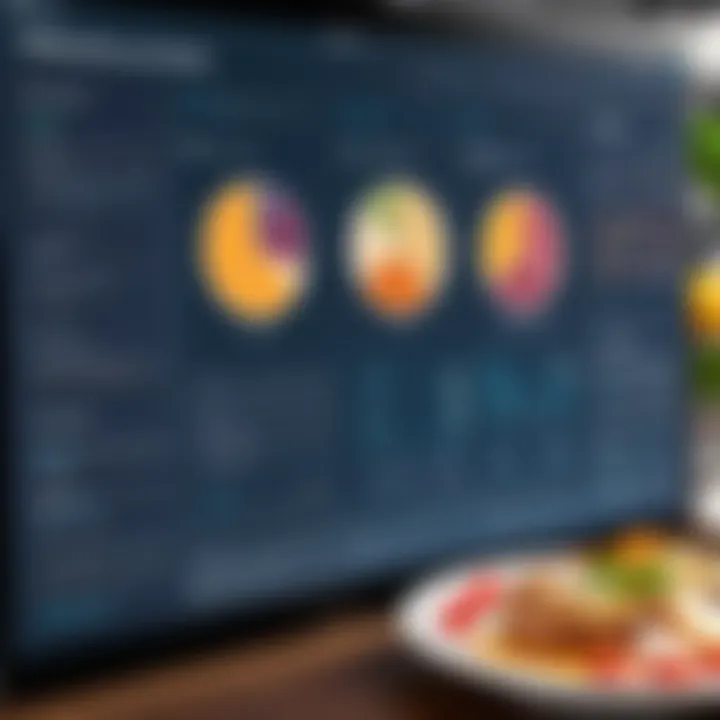
Intro
In the bustling world of restaurants, where flavors meet finances, the importance of precise cost management cannot be overstated. Every sprinkle of spice, every dollop of sauce, adds up when running a kitchen. This is where restaurant recipe costing software comes into play. It’s not just a tool, but a lifeline for chefs and restaurateurs aiming to maximize profit margins while maintaining culinary integrity.
Diving into this topic gives an understanding of how these technological solutions facilitate cost analysis, recipe management, and inventory control. But more than just software, this discussion highlights a shift in culinary operations—embracing tools that quantifiably bolster financial performance.
This article will navigate the complexities of restaurant recipe costing software, revealing how it streamlines operations and enhances profitability.
Preamble to Recipe Costing Software
In today’s fast-paced culinary scene, where costs can spiral quickly and margins slim, having a clear grasp on recipe costing software is essential for any restaurant owner or manager. This software is more than just a fancy spreadsheet; it’s a powerful ally that aids in the intricate balancing act of maintaining quality while keeping expenses in check. By offering an organized approach to pinpointing ingredient costs, portion sizes, and overall recipe budgeting, it can make the difference between profit or loss on menu items.
Definition and Purpose
Recipe costing software fundamentally serves to streamline the process of calculating the costs associated with each menu item. At its core, it's designed to track the expense of ingredients, labor, and overhead for each dish that a restaurant offers. This enables chefs not only to determine how much to charge to ensure profitability but also to analyze the financial viability of new dishes before they ever hit the kitchen.
In practical terms, this means that when a new recipe is being developed, the chef can input all necessary ingredients into the software, which will automatically calculate the total cost based on current prices. This makes it feasible to adjust recipes on the fly, ensuring that costs stay aligned with the overall budget.
Importance in the Restaurant Industry
The restaurant business often operates on razor-thin margins; one wrong move can lead to substantial financial losses. Thus, the importance of recipe costing software cannot be overstated. It enables restaurateurs to:
- Stay Afloat: In a highly competitive market, understanding costs down to the last penny ensures no one is caught off-guard by unforeseen expenses.
- Enhance Menu Design: When chefs know the costs associated with each dish, they can engineer a menu that highlights the most profitable items, ensuring a balanced offering that attracts customers while maintaining healthy margins.
- Optimize Inventory Management: By keeping tabs on what ingredients are being used most frequently, this software simplifies the inventory process, reducing waste and increasing efficiency.
Restauranteurs who embrace this technology often find themselves more adaptable to market changes. For example, if the price of a key ingredient soars unexpectedly, the software can help quickly assess whether to adjust menu prices or modify recipes accordingly. Also, this level of insight fosters a culture of financial awareness among staff, ultimately leading to better decision-making across the board.
By understanding the definition and significance of recipe costing software, restaurant operators can take proactive steps towards financial stability, allowing them to focus more on what really matters: the food.
Key Features of Recipe Costing Software
The world of restaurant management has grown ever more complex, necessitating tools that not only simplify processes but also enhance decision-making. Recipe costing software stands at the forefront of this transformation, equipped with several features that cater to the intricate demands of culinary operations. As we delve into these features, you'll find that the software does more than merely track costs; it supports strategic insights and operational efficiencies that can significantly impact a restaurant’s bottom line.
Ingredient Tracking and Management
One of the fundamental aspects of recipe costing software is its ingredient tracking and management feature. This capability allows chefs and operations managers to monitor inventory levels in real-time, ensuring that ingredients are always at hand. Moreover, this feature helps streamline the purchasing process by alerting managers when stocks are running low.
As a practical example, imagine a busy kitchen where basil is a crucial ingredient for several signature dishes. With ingredient tracking, the software sends a notification when basil stocks dip below a threshold, prompting timely replenishment. This not only minimizes waste but also prevents situations where a dish can't be served due to missing components. In turn, a well-managed inventory results in consistent dishes and greater customer satisfaction.
Cost Calculation Functionality
The next critical feature is cost calculation functionality, which allows restaurants to accurately ascertain the cost of each dish. This feature considers multiple variables, including ingredient costs, labor, and overhead. By breaking down each component, restaurant operators gain insights into where their money is going.
For instance, let’s say a restaurant has a popular pasta dish. The software can calculate the total cost based on the price of pasta, sauce, and garnishes. If any of these ingredients rises in price, users will be alerted, allowing for quick adjustments to the menu price if necessary. Having this information at your fingertips enables strategic menu revisions and optimized pricing, ultimately improving profit margins.
Menu Engineering Tools
Moving on, we find the menu engineering tools integrated into recipe costing software. This feature gives restaurant owners the power to analyze menu items based on profitability and popularity. Utilizing these insights, operators can make informed decisions regarding which dishes to promote, modify, or remove entirely.
Consider a scenario where a restaurant finds that a specific dessert is a top-seller yet has a low profit margin due to expensive ingredients. The software can highlight this discrepancy, enabling the owner to either adjust portion sizes or modify the recipe to preserve the dish's appeal while increasing profitability. This level of analysis drives a more refined and efficient menu strategy.
Reporting and Analytics
Lastly, the reporting and analytics capabilities are pivotal for evaluating performance over time. These tools can generate a plethora of reports, tracking everything from labor costs to ingredient pricing changes. With clear visuals, decision-makers can easily identify trends and anomalies in financial performance.
For example, a report might reveal that a particular item’s costs spiked during a certain month due to supplier price increases. With this knowledge, management can negotiate better rates with suppliers or find alternative ingredients that don’t compromise quality.
Effective use of reporting tools not only informs immediate decisions but also shapes long-term strategies in the kitchen and beyond.
By leveraging these features, restaurants can enhance their operational efficiency, boosting both productivity and profitability. Understanding the core functionalities helps in making better choices for the business and ensuring it thrives in a highly competitive environment.
Benefits of Implementing Recipe Costing Software
Implementing recipe costing software in a restaurant is not just a matter of keeping up with technology; it’s about enhancing efficiency and profitability in an industry where margins can be razor-thin. Understanding the benefits of this software can be a game-changer for restaurant owners and managers. This section will explore how it can lead to better cost control, improved profit margins, streamlined inventory management, and significant time savings.


Enhanced Cost Control
One of the most significant advantages of using recipe costing software is the enhanced cost control it provides. Traditional methods of costing recipes often rely on manual calculations, which can introduce errors and inconsistency. This software automates the process, ensuring that every ingredient's price is tracked accurately. It also allows for the quick adjustment of recipe costs based on fluctuating market prices.
When a restaurant can see, at a glance, how much every dish costs to make, it becomes much easier to manage expenses. With precise calculations, owners can identify which dishes yield the highest margins and which ones might be dragging profitability down. A well-implemented recipe costing software will help a restaurant owner maintain a razor's edge on ingredient costs, thus leading to better financial decisions.
Improved Profit Margins
The connection between recipe costing software and improved profit margins is clear. Armed with accurate costing data, restaurant owners can set price points that reflect the actual expense of each dish and the desired profit margin.
- By using this software, restaurants can:
- Evaluate different suppliers and their pricing for the same ingredients,
- Analyze past sales data to determine what menu items are most popular and profitable,
- Implement dynamic pricing strategies based on cost fluctuations and food trends.
This dynamic approach enables restaurants to adapt to changing market conditions and customer preferences, thereby ensuring that profit margins are maximized.
Streamlined Inventory Management
Effective inventory management can be daunting, especially in busy kitchens where ingredients come and go. Recipe costing software aids in streamlining inventory management by linking menu items directly to ingredient stock levels. This integration not only keeps track of what’s in the pantry but also alerts managers when it’s time to reorder.
The software can also automatically calculate the cost of wasted ingredients, giving insight into how to minimize waste and better manage orders. As a result, restaurants can reduce food spoilage and ensure they never run out of crucial ingredients, ultimately enhancing overall operational efficiency.
Time-Saving Benefits
In the fast-paced world of food service, every second counts. Recipe costing software automates routine tasks related to ingredient pricing and recipe management. This time-saving benefit allows kitchen staff to focus on what they do best—creating delicious food.
- Key aspects include:
- Instant Recipe Costing: Quickly determine the cost of any new dish using existing ingredient databases.
- Reduced Manual Labor: Limit the time staff spend on calculations and spreadsheets.
- Easier Menu Updates: Making changes to a menu can be done swiftly, with real-time updates reflecting any cost adjustments.
By significantly cutting down on administrative tasks, restaurants can not only increase productivity but also improve staff satisfaction as they can concentrate on crafting better culinary experiences.
"Investing in recipe costing software can transform a restaurant’s operational efficiency and enhance its bottom line."
In summary, the benefits of implementing recipe costing software are manifold. From achieving better cost control and improved profit margins to streamlining inventory management and saving valuable time, adopting this technology is no longer a luxury but a necessity in the modern restaurant environment.
Challenges in Adopting Recipe Costing Software
Adopting recipe costing software may seem like a straightforward task, but it's often riddled with complexities that can trip up even the most seasoned restaurant managers. Understanding these challenges is crucial for leveraging the software's full potential. The road to integrating such technology involves evaluating financial commitments, training personnel, and handling staff reluctance.
It’s important to note that tackling these difficulties can pave the way for a smoother implementation and better usage outcomes in the long run.
Financial Investment Considerations
When it comes to financial investment, the first thought for many operators is about the sheer cost of the software. While some systems come with a heavy price tag, it’s essential to look beyond just the initial expense. The potential return on investment (ROI) could outweigh these costs significantly. For instance, better management of ingredients and precise recipe costing can lead to reduced waste, increased profitability, and more clarity in financial forecasting.
Some key points to weigh include:
- License Fees: These vary widely based on features and services, and can be a recurring expense if the software is subscription-based.
- Hardware Requirements: Certain software solutions necessitate specific hardware setups, which may add to the total expenditure.
- Ongoing Support and Upgrades: Make sure to understand the costs related to ongoing support, which can be a hidden expense, especially if your restaurant relies heavily on this technology.
Training and Implementation Barriers
Realizing the full capabilities of recipe costing software depends largely on how well staff can navigate it. A common hurdle that restaurant management faces is the required training. Just like teaching a new dog an old trick, you can’t expect everyone to jump aboard without clear instruction. Employees need guidance to effectively utilize the system without frustration.
Consider these factors:
- Time Investment: Training takes time, which means less hands-on involvement with daily operations during this period.
- Learning Curves: Staff members may have different levels of tech savvy. Older employees or those used to traditional methods might struggle to adapt to the new normal.
- Comprehensive Training Resources: Not all programs offer thorough training resources, which adds a layer of difficulty, and can leave some staff in the dust.
Resistance to Change Among Staff
Cultural dynamics within a restaurant can deeply influence how new technologies are received. Staff resistance is a common scenario when they're accustomed to a specific way of doing things. Change can feel like a threat, often breeding skepticism and resistance.
To manage this effectively, communication is key. Here’s how to navigate through this:
- Involvement in the Process: Involving key team members during the selection and training can foster buy-in and mitigate resistance.
- Highlighting Benefits: Show how the software can lessen their workload or enhance their work experience instead of feeling like a burden.
- Promoting an Adaptive Culture: Building a culture that embraces change can alleviate fears and turn initial frustration into excitement.
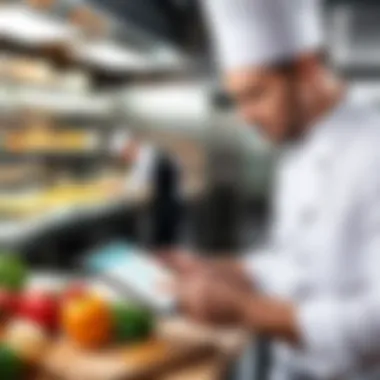

"Effective change management is about engaging your staff in the transition process, which helps assure them that the aim is to elevate operational efficiency—not replace them."
Through careful consideration of these challenges, restaurant owners can devise strategies to overcome them, ultimately leading to a more successful integration of recipe costing software within their establishments.
Choosing the Right Recipe Costing Software
Selecting the suitable recipe costing software is like finding a needle in a haystack. As every restaurant is unique, one-size-fits-all solutions often fall flat. It’s imperative that managers assess not just the tools available but also the specific needs of their business. In this section, we will break down critical elements to consider, which will help restaurant owners make informed decisions when it comes to purchasing or investing in recipe costing software.
Assessing Business Needs
Before diving into the various software options, understanding your own business’s requirements is crucial. What are your specific cost management goals? Are you looking to streamline inventory processes, improve profit margins, or perhaps both? A clear grasp of these elements will help in selecting software that fits like a glove. Here are a few considerations:
- Type of Cuisine: The complexity of the dishes on the menu can greatly impact the type of software required. For example, high-end restaurants with elaborate recipes may need sophisticated tools that allow for meticulous ingredient tracking and analysis.
- Size of Operation: A small bistro might benefit from simpler software, while larger establishments or chains might look for more comprehensive solutions that can handle multiple locations.
- Budget Constraints: It’s essential to factor in both initial investment and ongoing costs. Some solutions might seem affordable upfront but have hidden fees that can accumulate over time.
Being candid about these aspects allows for a more targeted search and prevents wasting time and money on unsuitable options.
Comparative Analysis of Options
Once you have a grasp of your specific needs, the next step is a thorough comparative analysis of the available options. It's helpful to draw up a list of features that are non-negotiable for your restaurant.
- Essential Features vs. Nice-to-Haves: Identify "must-have" features that will directly contribute to your cost-saving goals. Things like ingredient tracking, real-time cost updates, and integration capabilities should be at the top of your list.
- Demo and Trials: Most providers offer demos or free trials. Take advantage of these to test drive the software before making a commitment. Getting familiar with the user interface and functionality is worth its weight in gold.
- Research Sequence: Don’t just rely on marketing material. Check recent user reviews and demo results. It’ll help you gauge how versatile the software truly is.
- Holistic Perspective: Consider not only the software’s features, but also the company’s credibility, customer support, and user community. Sometimes, a less flashy software has all the power under the hood.
User Reviews and Recommendations
Nothing speaks louder than the experiences of those who have walked the path before you. User reviews and recommendations can serve as invaluable sources of insight in your decision-making journey.
- Social Proof: Platforms like Reddit and specialized restaurant forums can provide candid discussions about the pros and cons of different software. Engaging in these discussions can give you clarity and context filled with real-life applications.
- Case Studies: Look for testimonials or case studies similar to your business type. They often highlight the specific benefits and challenges that users faced, which can be critical in weighing options.
- Networking: Talk to fellow restaurant owners and industry professionals. Personal recommendations often guide choices better than any advertisement.
"Choosing the right restaurant recipe costing software is not just about features; it's about fulfilling the unique needs of your culinary operation. Take your time and make informed decisions."
By carefully assessing your business needs, conducting thorough comparisons, and leveraging user insights, you pave the way for selecting the optimal recipe costing software. The goal is not merely to adopt technology but to align it with your vision for success.
Integration with Other Restaurant Management Tools
In today’s competitive culinary landscape, restaurant management cannot function in a silo. The ability to connect recipe costing software with other management tools is pivotal, ensuring a seamless flow of information that keeps the operation running like a well-oiled machine. Integrating these various systems fosters a cohesive environment where data is not just collected but actively utilized to enhance decision-making, streamline operations, and ultimately increase profitability.
Linking to Accounting Software
One of the standout features of modern recipe costing software is its ability to integrate with accounting platforms like QuickBooks or Xero. This integration is not just a convenience; it’s a necessity that can transform how restaurant owners manage finances. By linking recipe costing software with accounting systems, businesses can achieve a more accurate reflection of costs, expenses, and revenues. This integration allows for real-time updates, meaning that every change in ingredient costs or recipe adjustments immediately reflects in financial reports.
Benefits of this integration include:
- Enhanced Accuracy: Elimination of manual entries reduces the chance of human error, ensuring consistency in financial reporting.
- Improved Cash Flow Management: Restaurant owners can see how their costing decisions impact their bottom line, enabling them to make timely financial adjustments.
- Automated Reporting: Regular financial statements can be generated automatically, saving hours of work and giving operators more time to focus on running their kitchen.
Having accounting software connected to recipe costing tools helps unlock critical insights that influence both short-term decisions and long-term strategies.
Cooperation with POS Systems
Point-Of-Sale systems are the heartbeat of any restaurant. Integrating recipe costing software with these systems is not only beneficial but also essential to maintaining accuracy across the board. When sales data is synced with recipe costing software, operators gain access to invaluable insights regarding which menu items are profitable and which ones are duds.
Here are some noteworthy advantages:
- Real-Time Sales Tracking: Operators can instantly monitor what dishes are flying off the shelves and which recipes may need re-evaluation based on sales performance.
- Dynamic Menu Pricing: Customers’ choices drive pricing strategies. Systems can allow for quick adjustments in pricing based on ingredient costs, demand, and sales trends.
- Inventory Management: With integrated POS and recipe costing software, inventory can be updated automatically with every sale, ensuring that operators always know what’s in stock and what needs replenishing.
Uniting these systems not only heightens efficiency but also fosters a data-driven culture that enhances overall business performance. By aptly merging the various digital tools at their disposal, restaurateurs can gain a comprehensive overview of their operations, making informed decisions that impact profitability and growth.
Best Practices for Implementing Recipe Costing Software
Implementing recipe costing software in a restaurant setting is not just a matter of flipping a switch. It's crucial to approach this integration thoughtfully to derive maximum benefit. Following best practices ensures that the software becomes an invaluable asset rather than an afterthought on the shelves. Establishing clear objectives, training staff effectively, and regularly reviewing software performance stand out as the three pillars of an effective implementation strategy. Let's unpack these concepts further.
Establishing Clear Objectives
Before jumping into the sea of digital tools, it’s vital to know what you’re diving for. Establishing clear objectives is perhaps the first and most critical step in this journey. Without defined goals, your team might end up chasing their tails, unsure whether they've actually achieved anything.
When formulating these objectives, consider the following:
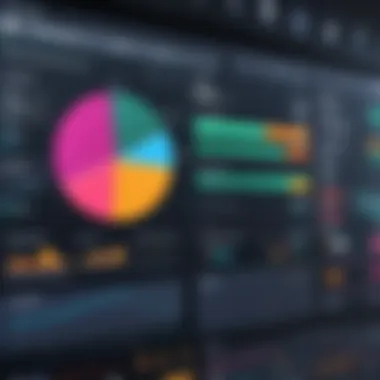
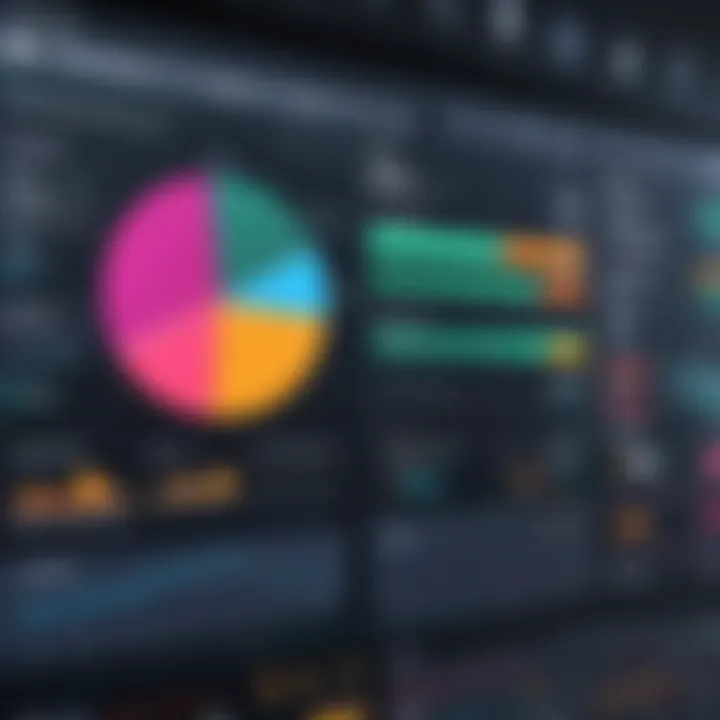
- Cost Savings: How much do you expect to save in ingredient costs?
- Efficiency Gains: Will this software streamline your inventory management process?
- Menu Profitability: Are you aiming to enhance menu item profitability through better pricing?
Writing down these objectives creates a roadmap for what success looks like. If the aim is to reduce food costs by a specific percentage, measure performance against that benchmark periodically to determine progress.
Training Staff Effectively
Next on the list is training your team properly. This isn't just about showing employees where to click on the software dashboard; it involves a deeper level of understanding. Staff must grasp the 'why' behind the software so they can leverage it to its fullest potential.
Here are some effective strategies:
- Engaging Workshops: Organize hands-on training sessions where staff can actively engage with the software.
- Documentation: Provide easy-to-follow guides or cheat sheets for quick reference.
- Peer Mentoring: Place a more tech-savvy employee in charge of assisting others. Peer-led training often results in better comprehension as it resonates more.
Through effective training, your staff will feel more at ease with the software, which translates into better data accuracy and enhanced operational efficiency.
Regularly Reviewing Software Performance
Implementing software is merely the beginning of the journey; keeping an eye on its performance is the ongoing task. Regularly reviewing how the recipe costing software is performing helps ensure you're reaping the expected benefits.
Consider these elements during your reviews:
- Usage Statistics: Are all team members utilizing the software?
- Feedback Loop: Regularly gather insights from users regarding software performance and any challenges they may face.
- Outcome Measurement: How are your predefined objectives holding up? Are you saving costs, improving workflow, or achieving the desired results?
"The secret of getting ahead is getting started."
Regular reviews mean you’re constantly tweaking your approach based on fresh data and feedback, ensuring that the software delivers on its promises and helps your restaurant thrive.
In summary, implementing recipe costing software involves creating clear goals, ensuring your team is well-equipped with knowledge, and consistently monitoring performance. By adhering to these best practices, restaurants can transform how they manage recipe costs, ultimately leading to improved efficiency and profitability.
Future Trends in Recipe Costing Technology
In an ever-evolving culinary landscape, the future of recipe costing technology stands as a pillar of efficiency and innovation. Understanding these trends not only keeps restaurant managers and decision-makers in the loop, but also empowers them to leverage technology effectively. As businesses strive to maintain profitability and streamlined operations, recognizing the significance of this topic can lead to more informed investment decisions and operational strategies.
AI and Automation Considerations
Artificial Intelligence (AI) and automation are game-changers in the field of recipe costing software. They offer not just improvements in speed but also enhancements in accuracy and data analysis capabilities. Imagine a system that not only calculates costs but also analyzes purchasing trends, suggesting cost-effective substitutes for ingredients. This foresight can drastically reduce expenses and enable managers to make decisions backed by concrete data.
Automated updates are another boon. With markets changing rapidly, having an automatic system that adjusts pricing based on supplier changes or ingredient availability can save restaurants both time and money. Rather than spending hours recalculating costs after receiving new supplier invoices, owners can focus on menu innovation or customer service.
Benefits of integrating AI and automation include:
- Improved accuracy in cost calculations, reducing human error.
- Real-time inventory tracking, preventing over-ordering or running out of crucial ingredients.
- Predictive analysis that can foresee ingredient price hikes, allowing preemptive budgeting.
"Incorporating AI isn’t just about keeping pace; it’s about setting the stage for smarter, more responsive business operations."
Integration of Advanced Analytics
The integration of advanced analytics into recipe costing software paves the way for deeper insights into operational performance. By harnessing vast amounts of data, restaurateurs can identify trends and patterns across different areas of their business, from ingredient usage to customer preferences.
Advanced analytics can help in fine-tuning menu items based on food costs and customer satisfaction. For example, data-driven insights can reveal which dishes are not only popular but also yield the best margins, guiding decisions on menu adjustments or promotions.
The key aspects of adopting advanced analytics include:
- Enhanced decision-making support by providing a clearer picture of financial health.
- ROI measurement from specific menu items, allowing for targeted promotional strategies.
- Customer behavior analysis that can shape future menu designs and marketing campaigns.
As culinary institutions increasingly look for ways to differentiate themselves in a saturated market, leveraging analytics becomes critical. This shift not only helps in maximizing profit margins but also contributes to a better dining experience for patrons, aligning culinary creativity with strategic financial management.
Ending
In wrapping up this exploration of recipe costing software, it's clear how vital this tool is for modern restaurants navigating the murky waters of cost management. The essence of embracing such technology lies in its ability to not only monitor expenses but also to provide a comprehensive view of profitability. With the right software, owners and managers can ensure that every ingredient is accounted for, enabling precise pricing strategies. This attention to detail goes a long way in enhancing a business’s overall financial health.
Summary of Key Insights
Throughout the sections discussed, some key insights emerge as crucial:
- Investment in Accuracy: Recipe costing software offers detailed ingredient tracking and cost calculation, translating into accurate menu pricing.
- Profitability Boost: By leveraging analytics, restaurants can fine-tune their menus based on cost-performance metrics, ensuring each dish contributes positively to the bottom line.
- Streamlined Operations: Integration with other management tools simplifies workflows, ultimately saving time which can be redirected toward enhancing customer experience.
- Addressing Barriers: Understanding the challenges that come with adopting this software ensures that restaurants can smoother transitions and achieve effective training outcomes for staff.
Overall, aligning the use of recipe costing software with business objectives leads to informed decision-making, resulting in sustained success.
Encouragement to Consider Investment
For those still on the fence about investing in recipe costing software, it’s worth reflecting on the long-term benefits it confers. While the initial investment may seem like a stretch, consider the cost of inaccuracy and inefficiency that could wreck profit margins.
Adopting such software isn’t merely a luxury; it's a strategic necessity in a competitive landscape where every cent counts. Making the leap can empower businesses to become more agile, adaptable, and prepared for market shifts.
By evaluating options and selecting the right fit, restaurant operators position themselves for resilience and growth. In a field where culinary excellence meets fiscal discipline, recipe costing software is your ally in crafting a profitable journey.







